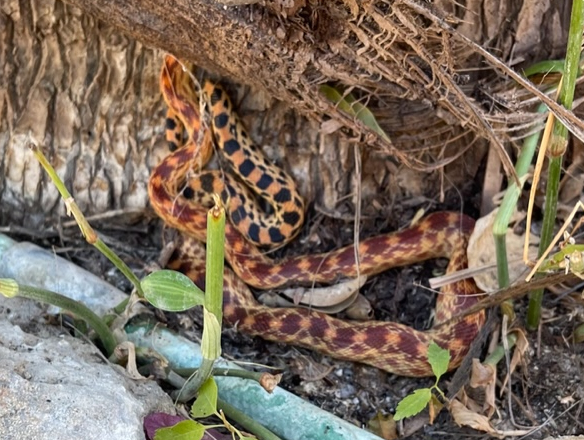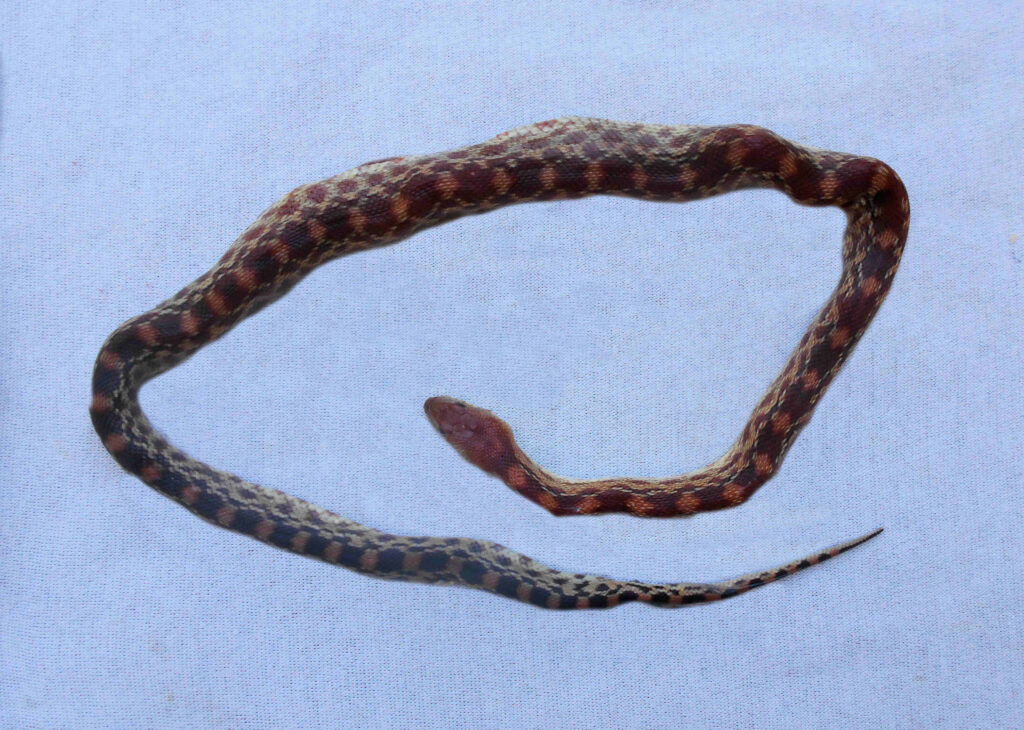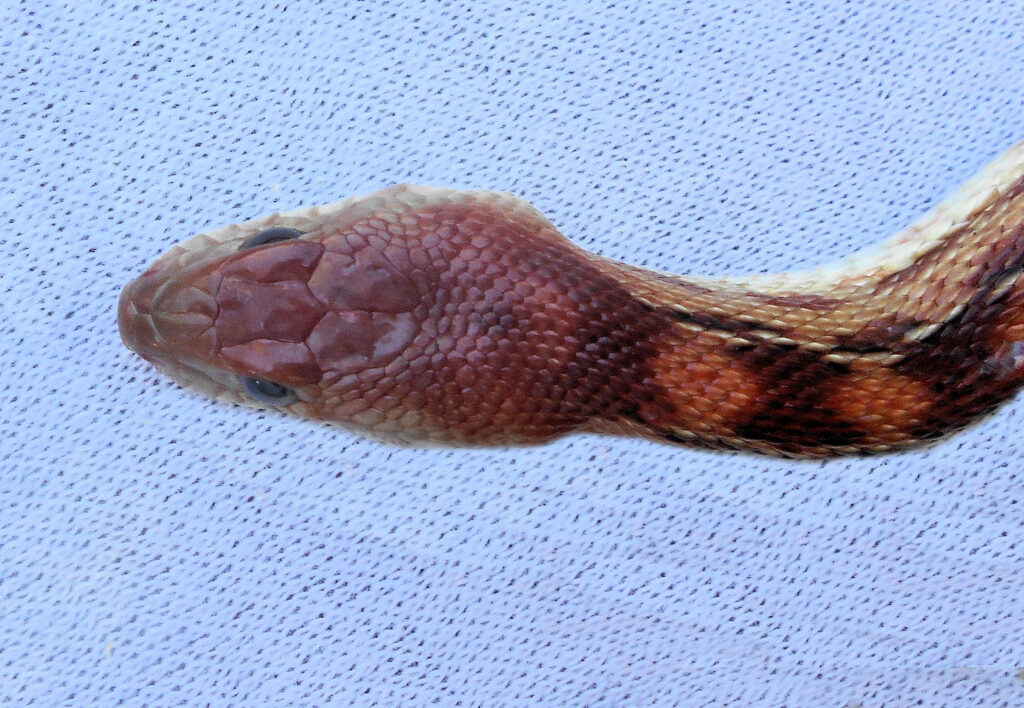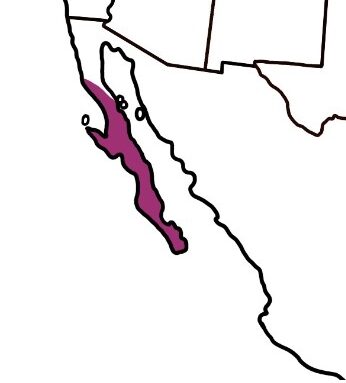Cape Gopher Snake, Pituophis vertebralis
 Cape Gopher Snake, Pituophis vertebralis. Photograph taken in the backyard in a residential community in the greater Las Barilles area, Baja California Sur, January 2023. Length: 1.0 m (3 feet 3 inches). Photograph and identification courtesy of Ian Franck, New Westminster, British Columbia, Canada.
Cape Gopher Snake, Pituophis vertebralis. Photograph taken in the backyard in a residential community in the greater Las Barilles area, Baja California Sur, January 2023. Length: 1.0 m (3 feet 3 inches). Photograph and identification courtesy of Ian Franck, New Westminster, British Columbia, Canada.



 Cape Gopher Snake, Pituophis vertebralis. Snake collected from within a residence in the greater Los Cabos area, Baja California Sur, April 2019. Length: 1.77 m (3 feet 9 inches).
Cape Gopher Snake, Pituophis vertebralis. Snake collected from within a residence in the greater Los Cabos area, Baja California Sur, April 2019. Length: 1.77 m (3 feet 9 inches).
The Cape Gopher Snake, Pituophis vertebralis, is a member of the Colubridae family of North American Racers, Coachwhips, and Whipsnakes. The Colubridae family comprises two-thirds of the world’s snake population with one thousand seven hundred sixty species place in two hundred forty nine genera. Many Colubrids are classified as venomous but very few are considered to be dangerous to humans. There are seven species and sixteen subspecies in the Pituophis genus. The Cape Gopher Snake is also known as the Baja Gopher Snake and in Mexico as Serpiente Tuza Del Cabo.
Cape Gopher Snakes display great individual variation in both color and pattern. Their dorsal surface is typically blotched, with the blotching undergoing a dramatic color and shape change as one moves from the neck of the animal to the tail. Blotches posterior to the head are brick red, orange, or cinnamon in color and are “H” shaped. At mid body there is a gradual but distinct transition to bold black blotches that are roughly the shape of a square. In total, there are typically 43 to 47 dorsal blotches. Their body color is highly variable and can be yellow, brick red, brown, or orange. Those found in the northern portion of their range tend to be darker overall. Their head is narrow and high with the lateral surfaces being remarkably tall and squared off. No discernable pattern appears on their head, except for a sometimes abrupt transition from darker orange tones on the dorsal surface of the head to lighter yellow or white tones on the ventral surface. Their neck is thin and the first blotch appears about 9 to 12 scales back from the head. Two varieties of Cape Gopher Snakes exist in captivity. The “normal” variety has been bred to accentuate orange, red, and yellow colors. The “hypomelanistic” variety has a very reduced dorsal pattern and typically has no blotches. When the Cape Gopher Snake is coiled up alone, the differing colors and patterns may be mistaken for several different snakes. Adults are typically 91.5 cm (3 feet 0 inches) to 1.68 m ( 5 feet 6 inches) in length while hatchlings are typically 30 cm (12 inches) to 48 cm (18 inches) in length.
Most information regarding the lifestyle and behaviors of the Cape Gopher Snake are based on captive bred populations. While it is assumed that wild populations exhibit similar lifestyles and behaviors, some differences between these populations may be present. In captivity, Cape Gopher Snakes have variable behaviors with hatchlings being very easily agitated and adults being more tranquil. They are, however, somewhat nervous, active animals and prefer a quiet, low stress captive environment. Females typically breed before their first shed in the spring and eggs are laid approximately 45 days after the onset of copulation. Typical clutches range from 5 to 10 eggs and well-fed females are capable of double clutching. Eggs are incubated for approximately 70 days and hatchlings are robust and active upon hatching. Prey preferences of wild Cape Gopher Snakes is poorly documented but it is assumed that they prey on a variety of small mammals and lizards. In captivity, they readily feed on lab mice, deer mice, and lab rats. While the average lifespan of the Cape Gopher Snake is not well documented, Gopher Snakes typically live between twelve and fifteen years in captivity.

The Cape Gopher Snake may be confused with the San Diego Gopher Snake, Pituophis catenifer annectens (black or brown joined rounded blotches; 65 to 106 dorsal blotches; tan or yellow body).
From a conservation perspective, the Cape Gopher Snake is currently considered to be of Least Concern due to their wide distribution and large population size. Cape Gopher Snakes have become increasingly popular in the exotic pet trade due to their extreme color variations and relatively docile behavior. While they appear in the exotic pet trade, it does not constitute a threat to the species. No additional threats have currently been identified.